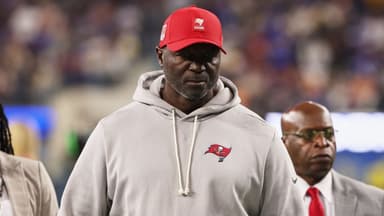Hurricane Katrina was one of the most devastating natural disasters in American history. It left behind physical, emotional, and psychological scars that still linger to this day. New Orleans, in particular, bore the brunt of its fury. More than 1,500 lives were lost, tens of thousands lost their homes and livelihoods, and the damage totaled over $125 billion. The city’s sense of order collapsed, up felt like down, and down like up. In that chaos, football became something more than just a game.
Advertisement
At the time, the New Orleans Saints were one of the NFL’s poorest and least successful franchises. Winning football wasn’t something the city had known much of, but after Katrina, wins and losses didn’t matter. What the people needed was hope. They needed a symbol, someone to remind them of resilience. Out of that darkness emerged the unlikeliest of heroes: Steve Gleason.
Gleason, now confined to a wheelchair after his ALS diagnosis, can no longer move on his own. Yet the memory of one play, one blocked punt, still echoes louder than any words.
It was September 25, 2006. The Saints were finally back in the Superdome after 21 long months. Katrina had gutted the stadium, forcing the team to play the 2005 season in San Antonio, where they stumbled to a 3–13 finish. But the new season had begun with fresh energy. The Saints were 2–0, hope was flickering, and that night, the Dome was alive.
Their opponent? The undefeated Atlanta Falcons. On their opening drive, the Falcons stalled and lined up to punt from their own 29. Michael Koenen dropped back, preparing for a routine boot. But Atlanta only had ten men on the field, a detail not missed by the Saints’ special teams coach, who sent the message: go for the block.
The Saints rushed eight. As Koenen swung his leg, Gleason burst through the line, arms outstretched. In an instant, leather met fingertips. The ball ricocheted toward the Falcons’ goal line, where Curtis Deloatch pounced and carried it into the end zone. “Touchdown, New Orleans,” shouted Mike Tirico.
Now, 19 years later, Drew Brees still thinks about that night. It was his and Sean Payton‘s first season in New Orleans. He admits he didn’t even see the play live; he was on the bench, preparing for the offense’s first series.
“I’m really not even watching the punt. I’m sitting there, just zoned in. I’m just focusing more on what I’m going to do when I step out on the field to execute the first drive in what is the biggest game of all of our lives up to this point. I hear it before I see it. It is this block punt by Steve Gleason.”
The Dome didn’t just cheer, it erupted. For the first time since Katrina, joy roared through the city.
“It was like a shotgun blast, and the SuperDome absolutely erupted. That was the symbol to the city, but the world that New Orleans was going to come back stronger. There was no way we were going to lose that game.”
New Orleans was alive again. The Saints rode that wave all season, all the way to the NFC Championship. They built a statue of Gleason blocking that punt outside the stadium, and when the Saints won the Super Bowl three years after that, they gave him a ring to honor him, even though he had retired after that season because of ALS.







